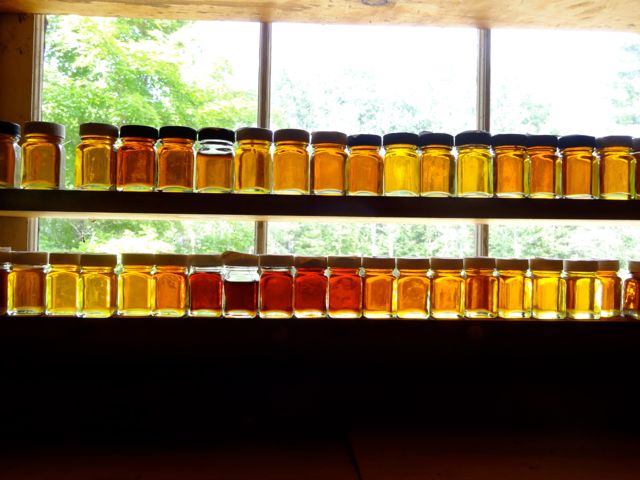While you are enjoying your buttermilk pancakes on a cozy Sunday morning, drenching them with a sweet natural syrup, you may want to read this story of how maple syrup makes its way from a tree to your table.
I visited the Uihlein Sugar Maple Research and Extension Field Station in Lake Placid, New York, which is a 200+ acre as of outdoor lab facility for Cornell University. Here researchers explore different ways to cultivate genetically improved maple stock, techniques for sap collection and syrup processing.
To collect sap from a maple tree, small holes are drilled into trees. During warm periods when temperatures rise above freezing, pressure develops in the tree. This pressure causes the sap to flow out of the tree through a wound or tap hole. (If properly done, no trees are harmed in this process.)

After it is collected, sap is often stored in tanks near the end of the mainline for brief periods of time, and may then be transported to tanks near the sugar house for longer storage. To increase the sugar concentration of sap – and create syrup – many gallons of water need to be removed from the sap. The evaporator is the device that heats the sap and boils off this excess water. When the sap sugar concentration reaches approximately 66-67%, it is referred to as maple syrup.
To measure the sugar content, a refractometer is used. The sugar concentration of the water causes light to “refract,” or scatter when it passes through the water solution. The glass with more sugar would cause the sunlight to refract more than the glass with only a pinch of sugar.

Before syrup is packaged, it must be filtered to remove precipitates (solid particles) that form during evaporation and processing. Producers use either pressure or gravity filters to remove these particles.
The syrup is then graded based on its color. Though there is some variability, maple producers in the United States generally use the following grading system:
- Grade A Light Amber – mild and delicate flavor
- Grade A Medium Amber – darker than Grade A Light Amber, with a fuller flavor
- Grade A Dark Amber – darker than Medium Amber, with a very strong maple flavor
- Extra Dark – used for cooking, with the strongest maple flavor
- Grade B – sold in bulk for reprocessing and the manufacture of commercial syrups
 The syrup is then packaged into containers for wholesale and retail. At this facility, you can buy Cornell Maple from an unmanned store. There is an honesty policy, where you leave the money for whatever you wish to take. The station in Lake Placid is open for tours to the public, and the best time to visit is from late February to early April so you can see the production of maple.
The syrup is then packaged into containers for wholesale and retail. At this facility, you can buy Cornell Maple from an unmanned store. There is an honesty policy, where you leave the money for whatever you wish to take. The station in Lake Placid is open for tours to the public, and the best time to visit is from late February to early April so you can see the production of maple.
This information was gathered from the site of Cornell Sugar Maple Research and Extension Program. Learn how to produce your own maple syrup with this beginners guide.
